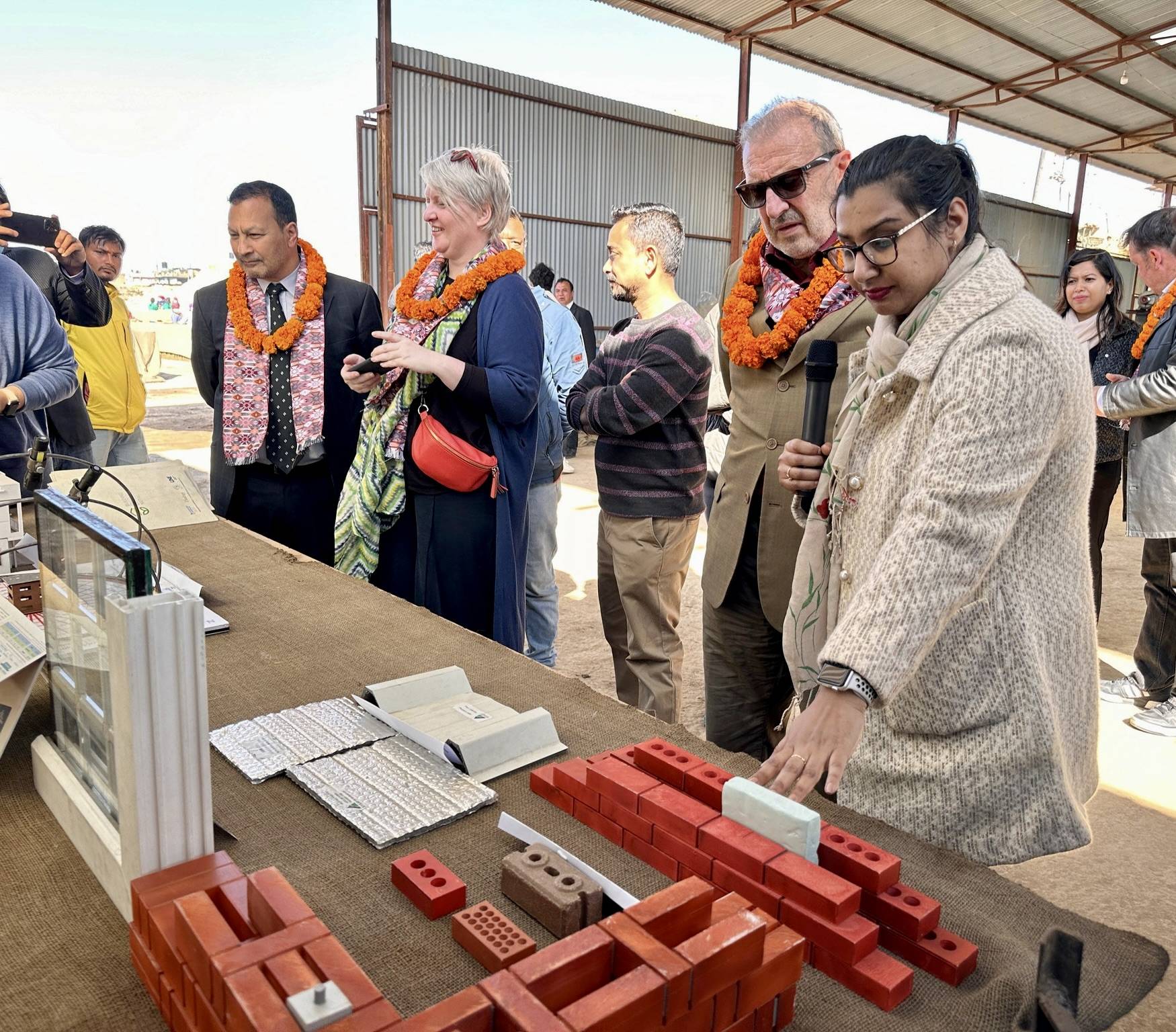
Nepal is one of the top ten fastest-urbanizing countries, with its urban population reaching 66.2% as of 2023 and an annual growth rate of 3.8%. This rapid urbanisation, coupled with population growth, and rising living standards, has led to a steady increase in energy demand across the nation. However, this growth often comes at the cost of environmental degradation, energy inefficiency, and vulnerability to climate change impacts.
The extensive use of energy for heating and cooling in buildings not only contributes to a large carbon footprint but also leads to higher energy expenses. Yet, Nepal’s diverse climatic conditions from the subtropical plains of the Terai to the high-altitude Himalayan regions pose a unique challenge ensuring the comfort, efficiency, and sustainability of its built environment.
Despite efforts, residential energy consumption in Nepal has outpaced population growth, escalating at a rate of 2.23% annually over the past two years (WECS, 2022). This prioritises the pressing need to familiarise ourselves with the significance of climate-responsive building designs and retrofitting. These measures will alleviate the strain on the country's energy resources, reduce greenhouse gas emissions, and enhance resilience to the impacts of climate change in Nepal.
By adopting climate-responsive building designs, tailored to adapt to Nepal’s diverse climatic variations, the occupants can enhance their well-being by achieving thermal comfort and indoor air quality, without excessive energy usage, and contributing to a more sustainable and prosperous society.
The EU SWITCH-Asia funded BUILDING Energy Efficiency in Nepal (BEEN) project seeks to bring about transformation towards a low-carbon and resource-efficient in the building sector. This transformation not only directly impacts stakeholders involved, including house owners, and building users, but also extends to various target groups within the Micro, Small, and Medium Enterprises (MSMEs) sector, offering the environmental benefits.
To achieve its objectives, the project has adopted a four-pillar approach: Capacity building, Market System, Financial instruments, and Policy environment. Capacity building initiatives target key stakeholders in the building sector, including architects, engineers, contractors, door/window fabricators, brick and block producers, and service providers. By disseminating knowledge and best practices in energy-efficient building design and construction, these efforts aim to ensure the sustainability of services beyond BEEN’s life.
The market system component involves conducting awareness-raising campaigns among end-users to highlight the importance and benefits of energy efficiency (EE) in buildings. Additionally, it emphasizes the promotion of MSMEs engaged in building consulting, construction, and materials production through targeted marketing strategies and tools.
Access to finance for MSMEs and end-users in the application of EE and resource efficiency (RE) measures is another important aspect of the project to promote energy efficiency in building construction through incentivizing MSMEs and end-users. This kind of collaboration also aims to encourage other commercial banks to invest their capital in the development of a sustainable building sector in Nepal.
Moreover, by partnering with 60 municipalities, the project advocates for policy changes at different levels of governance. This policy advocacy includes supporting the integration of energy efficiency measures into municipal by-laws and fostering a collective effort toward achieving long-term sustainable goals.
What has been achieved so far
In the second year of implementation, the BUILDING Energy Efficiency in Nepal (BEEN) Project achieved significant milestones in promoting sustainability and energy efficiency within Nepal's building sector.
The project successfully empowered a total of 162 individuals representing 137 enterprises, including 57 design MSMEs, 38 construction MSMEs, 25 EE and RE service providers, and 17 brick and block producers.
Design Charrettes, an integrated approach through which the project provides technical support to design and construct energy-efficient buildings, were conducted for real estate housing developers, aiming to explore possible energy-saving measures for transforming 72 houses into energy-efficient houses.
Performance monitoring activities were initiated at the showcase building in Gwarko, Lalitpur to validate the impact and effectiveness of recommended measures on energy efficiency and renewable energy in the building. The meticulous data collected and subsequent analysis will facilitate the refinement of design guidelines and policy recommendations accordingly.
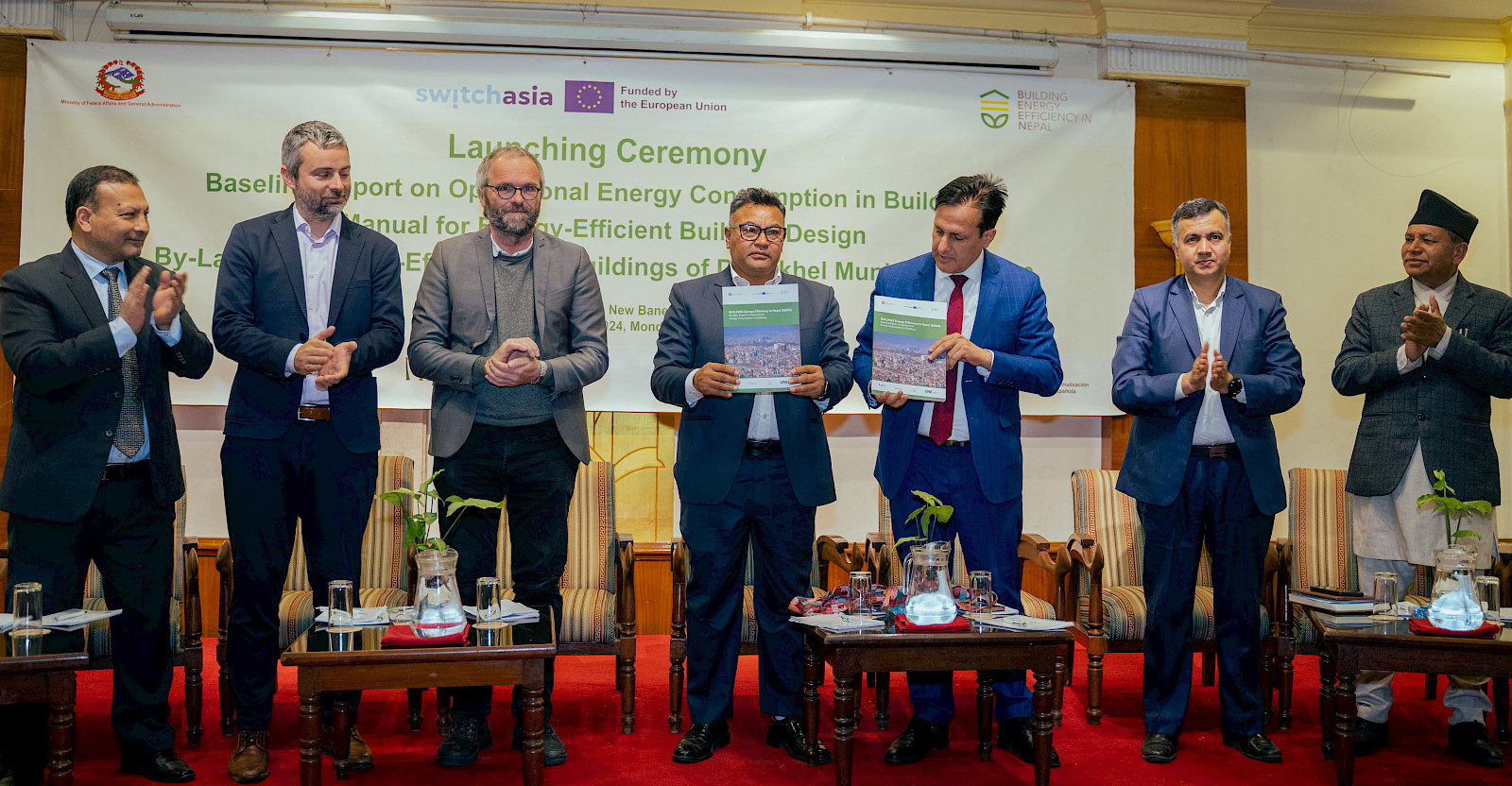
An important achievement was the unveiling of the first version of the Design Manual for Energy Efficient Building Design and the Baseline Report on Operational Energy Consumption in Buildings in Nepal. The manual equips architects, engineers, and building professionals with the necessary knowledge and tools to construct energy-efficient buildings, ensuring structures provide thermal comfort while remaining sustainable and environmentally friendly, crucial for Nepal's climate of temperature extremes. Whereas, the baseline report lays the groundwork for understanding current energy usage and outlines pathways towards sustainability.
During the Launching event, Mr. Nawa Raj Dhakal, Executive Director of, the Alternative Energy Promotion Centre (AEPC), stated that the "Baseline Report on Operational Energy Consumption in Buildings is a guiding document that will guide us through the aspects of energy that we need to consider while talking about energy efficient buildings".
Furthermore, Mr. Ghanashyam Giri, Mayor of Chandragiri Municipality remarked “Chandragiri Municipality will commit to implementing Energy Efficiency guidelines in its by-laws".

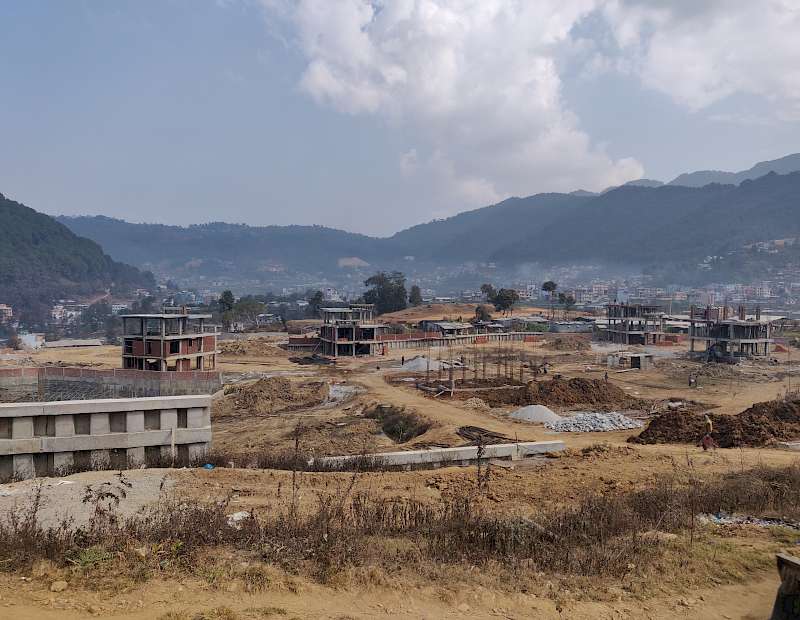
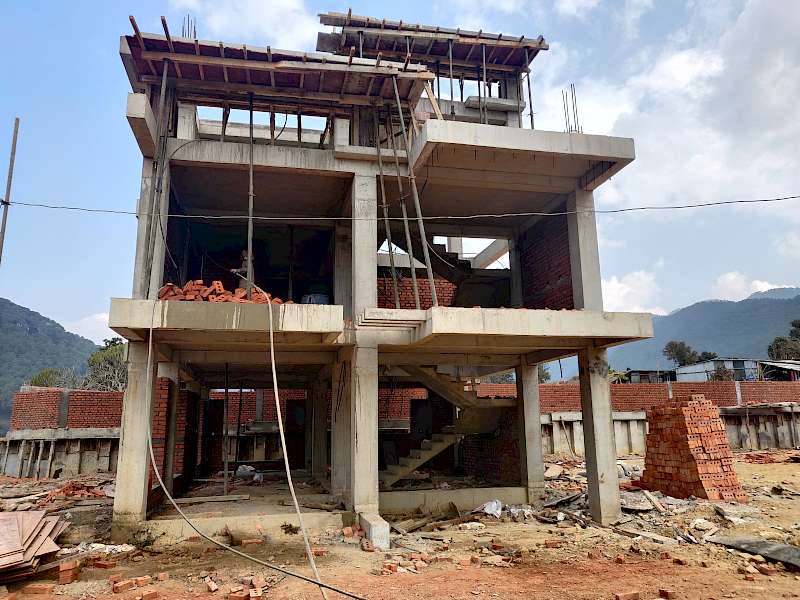
In addition to providing intensive technical support to Builder-MSMEs, BEEN has facilitated business-to-business matchmaking between different types of MSMEs. Noteworthy collaborations between Real Estate MSME (Bhoomi Developers) and Hollow Brick MSME, (Hosanna Brick Factory), have demonstrated the viability and scalability of sustainable construction practices. The uptake of energy efficiency measures by the Bhoomi Developers in their design phase, and the application of 2.5 million hollow bricks, as a resource-efficient walling material, in 72 residential row housing units in Godawari, Lalitpur, is expected to save 165 tons of CO2 emissions, showcasing the potential for transforming ordinary homes into energy-efficient spaces. This collaborative effort not only expanded the market for hollow brick producers but also strengthened the supply chain toward sustainable consumption and development practices in Nepal.
Trained MSMEs, empowered with the knowledge and skills through the BEEN Project, are committed to making a difference by applying hollow bricks in renovating a school building. These grassroots movements, fueled by the passion to guide end-users towards environmentally conscious decisions, set a precedent for sustainable construction practices, advocating for the adoption of energy-efficient materials.
Moreover, the private sector supported by the BEEN Project is driving the market by promoting hollow bricks as a resource-efficient, environmentally friendly walling material. Pokhara Eco Red Bricks, Pokhara, initially produced 65,000 hollow bricks, which now the stockpile has increased to over 200,000, readily available to cater to the demand. With a dedicated allocated budget for marketing through digital and non-digital platforms, MSMEs are paving the way for a greener future, aligned with the project's goal of empowering MSMEs to independently market their products.
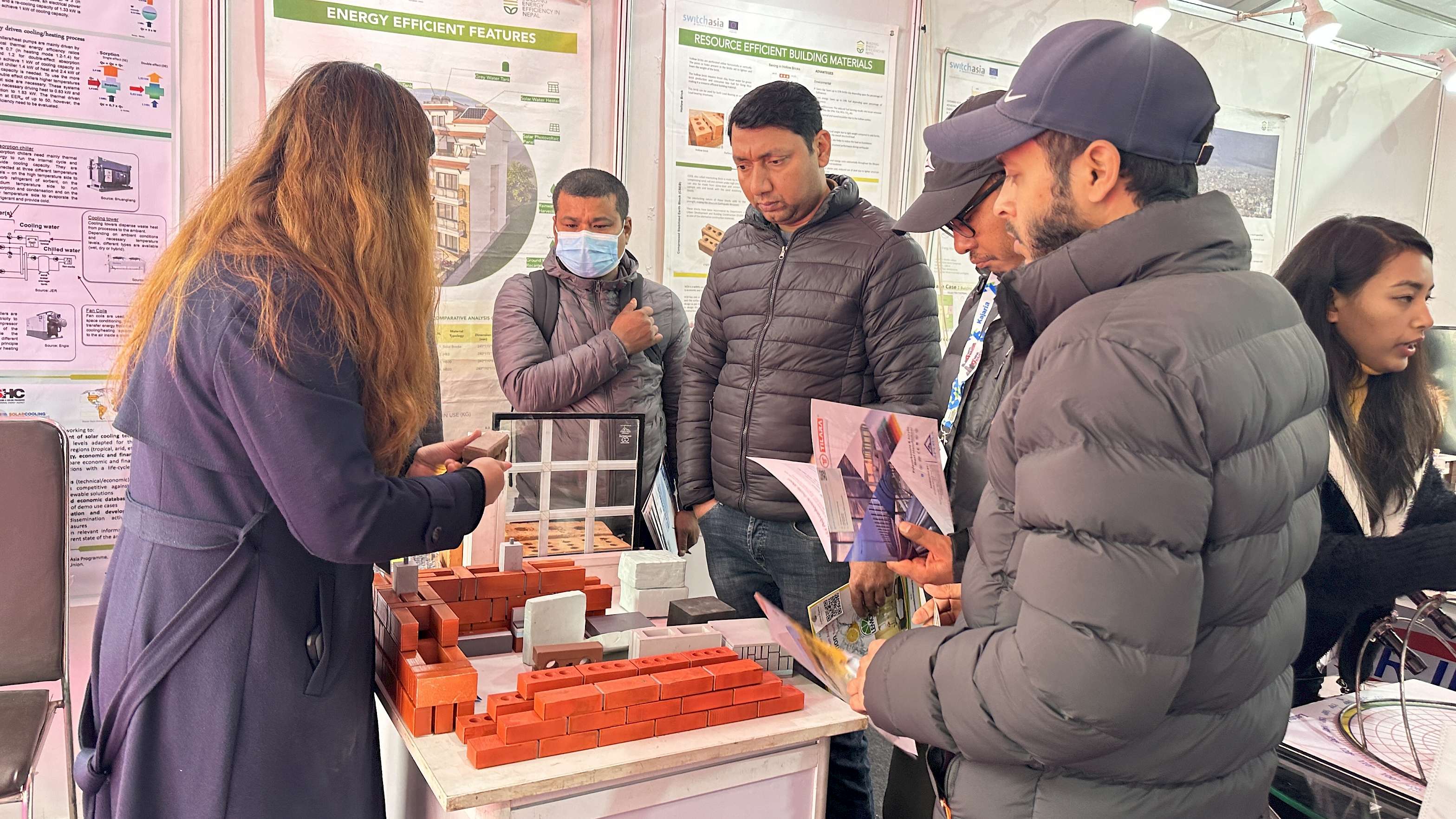
Awareness-raising efforts were made through participation in Nepal's largest real estate expo, interacting and engaging with end users during the stall visits by showcasing energy-efficient building models, different walling technique prototypes, and energy-efficient and resource-efficient technologies. Moreover, frequent visits were organised to BEEN’s showcase building in Gwarko, Lalitpur, which has served as a venue to showcase EE and RE initiatives on multiple occasions showcasing energy efficiency and renewable energy initiatives on multiple occasions to various stakeholders, including end-users, MSMEs, policymakers, and financial institutions.

One of the noteworthy achievements was the signing of a Memorandum of Understanding with NABIL BANK to promote energy-efficient, sustainable, and climate-responsive building design through a 'Sustainable Housing Loan' scheme, incentivizing energy efficiency measures in the building sector. BEEN provided intensive technical support to define components and assessment parameters of the loan product, streamlining the process to access preferential financial instruments. This initiative considers the eligibility of the building sector for various sustainable funds, paving a path for others to follow toward the development of a low-carbon and resource-efficient building construction sector in Nepal.
With 42 successfully signed MoUs with the municipalities, along with orientation provided to local governments and associated technical staff of the building permit unit, the project achieved a significant milestone in advancing the integration of energy efficiency measures into the by-laws. Notably, Pokhara Metropolitan City and Dhulikhel municipality, among the 753 local governments stand out for their commitment. Pokhara Metropolitan City has already published the by-laws in their Gazettes, while Dhulikhel municipality plans to publish them as a separate booklet. These actions set a precedent for other municipalities to follow, signaling a collective commitment towards sustainable development and energy-efficient building practices across Nepal.
What’s Next
The capacity development efforts, such as training and workshops, aimed at equipping building MSMEs with the necessary knowledge and skills to design and construct energy-efficient buildings suitable for various bioclimatic regions will be continued.
The simulation analysis through the design charrette of showcase buildings in temperate bio-climatic zones shows that savings of 28% to 36% could be achieved through various energy-efficient measures, including the integration of possible passive strategies and the use of resource and energy-efficient materials. Additionally, technical support will be provided for designing and constructing showcase buildings in other bio-climatic regions through design charrette in the upcoming period. Moreover, to substantiate the savings generated from the analysis, performance monitoring will be carried out for the buildings that have integrated energy efficient measures, utilizing proper equipment to measure efficiency and validate the results of the analysis conducted during the design charrette.
BEEN will undertake efforts to raise awareness through various digital and non-digital platforms including events and workshops aimed at promoting the adoption of energy-efficient building practices. Additionally, the construction of demonstration walls in different municipalities' premises will serve as tangible examples of low-carbon and resource-efficient building construction solutions to fostering a low-carbon and resource-efficient building construction sector in Nepal.
Technical support will also be provided to the municipalities to integrate the provisions of energy efficiency directly or as addendums to their existing by-laws accompanied by checklists, as well as incorporating them into Standard Operating Procedures (SOP), such as a Designer's Manual, to guide registered designers within the municipalities.


